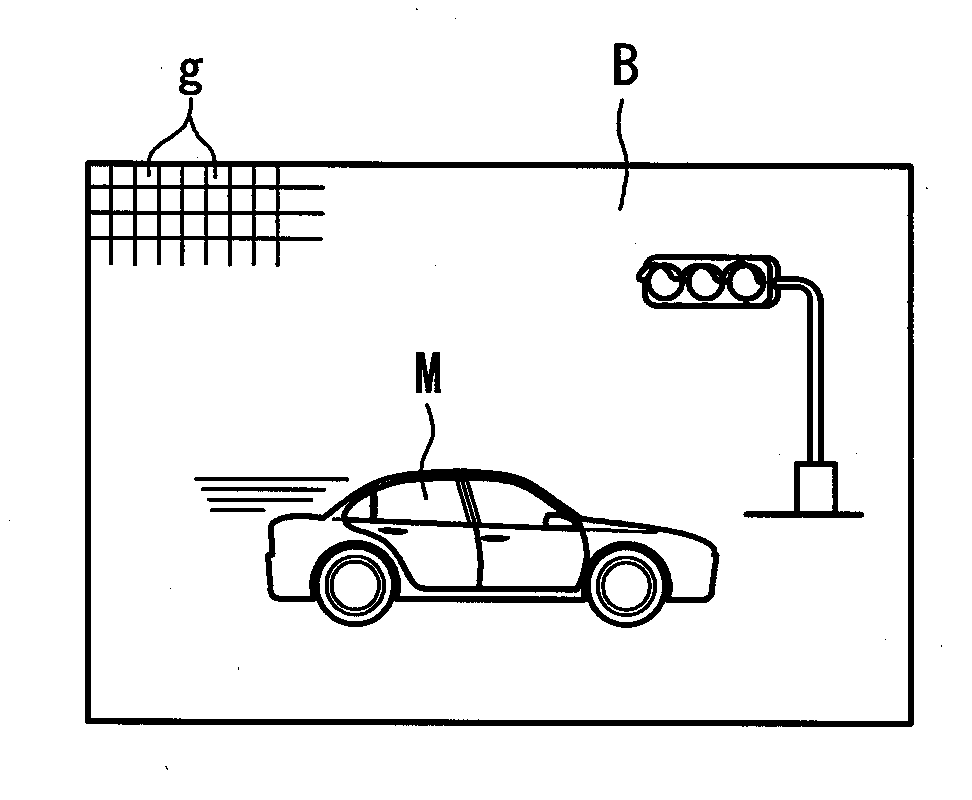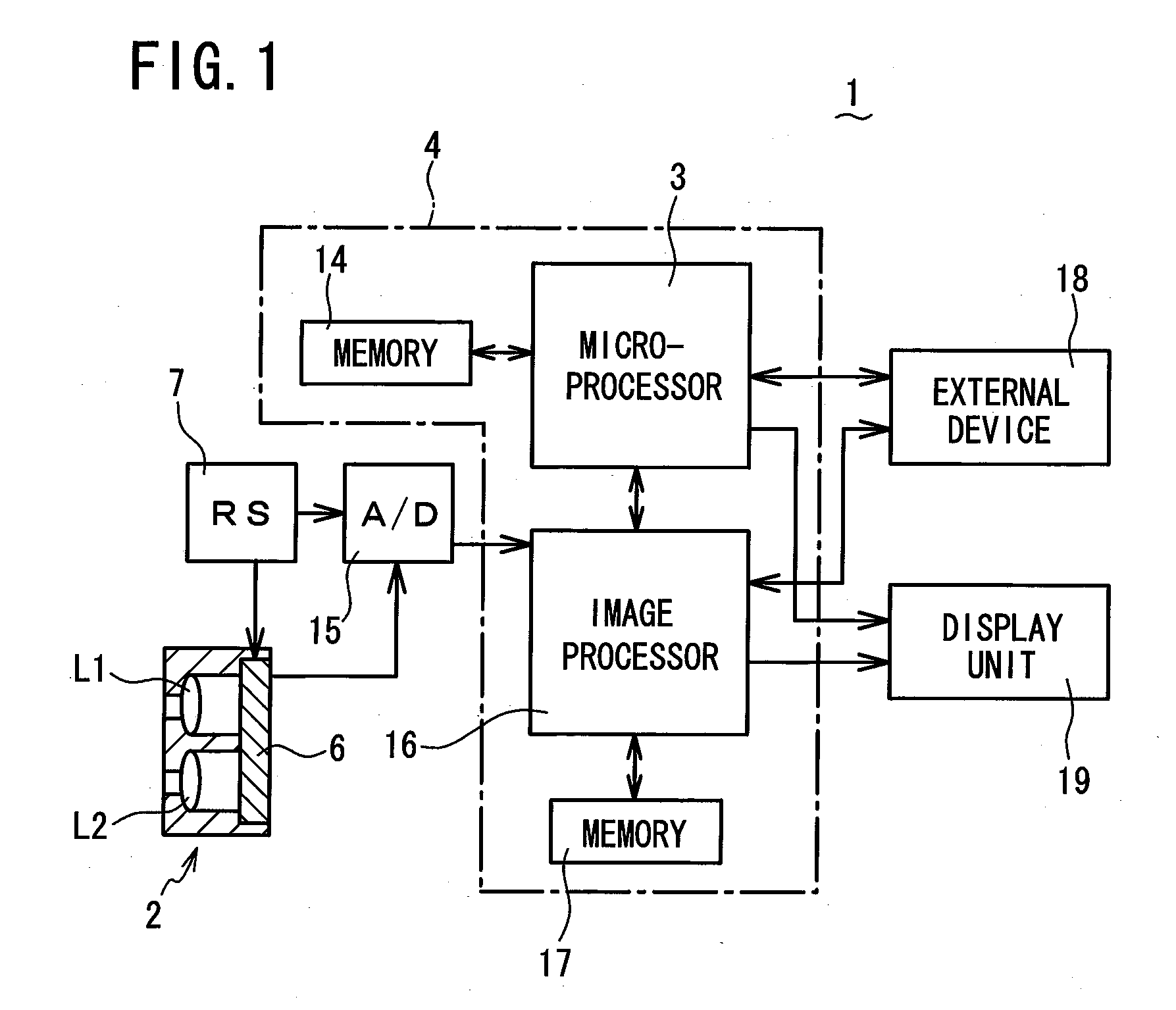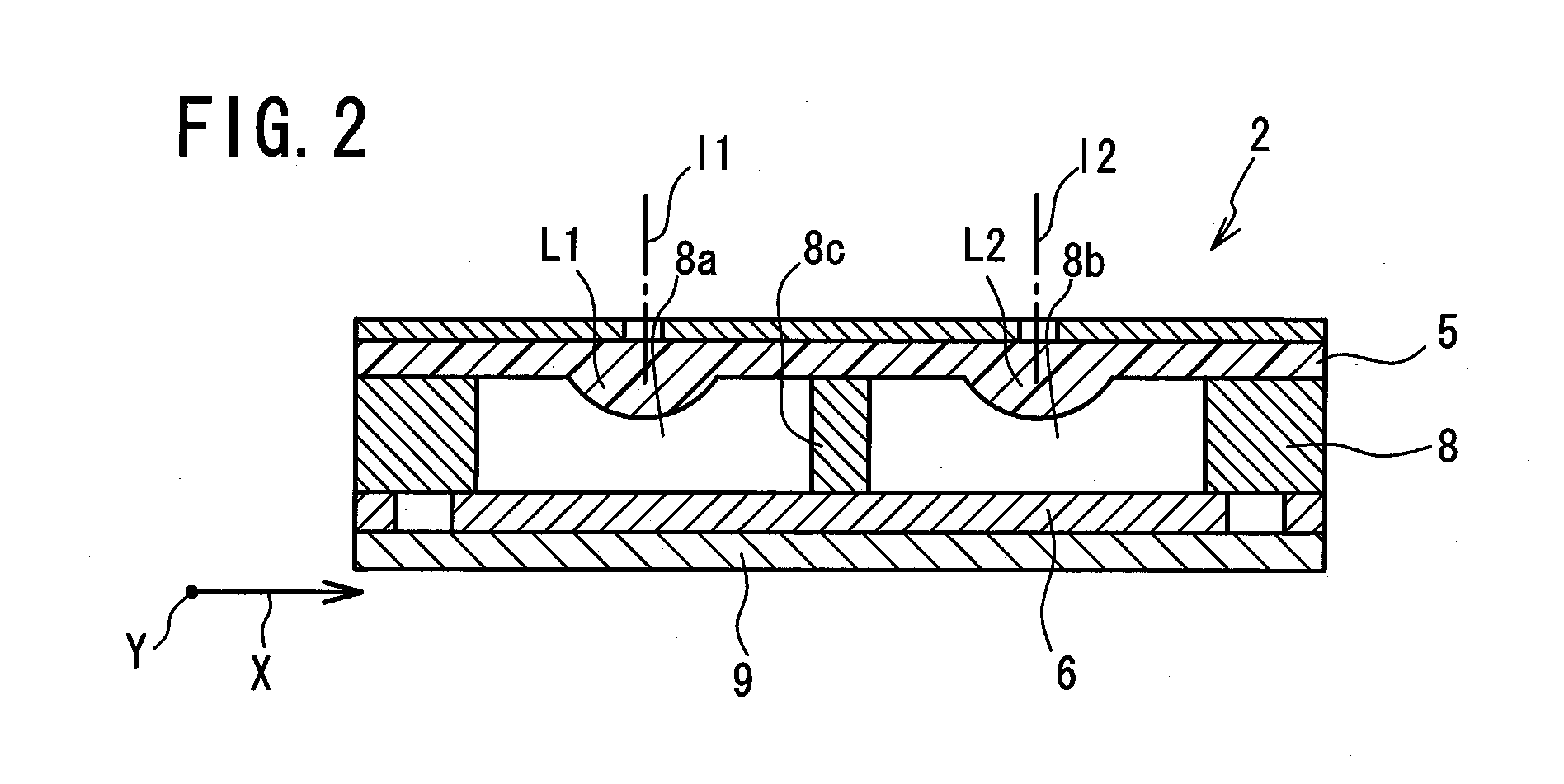Motion Detection Imaging Device
- Summary
- Abstract
- Description
- Claims
- Application Information
AI Technical Summary
Benefits of technology
Problems solved by technology
Method used
Image
Examples
first embodiment
[0027]Referring to FIG. 1 to FIG. 8, a motion detection imaging device (imaging device for motion detection) 1 according to a first embodiment of the present invention will be described. As shown in FIG. 1, the motion detection imaging device 1 comprises: a compound-eye imaging device 2 for collecting light from an object so as to capture two single-eye images; and an electronic circuit 4 having a microprocessor 3 (motion detection means) as its main part. The microprocessor 3 detects movement of an object by comparing plural single-eye images.
[0028]As shown in FIG. 2 and FIG. 3, the compound-eye imaging device 2 comprises: an optical lens array 5 having two optical lenses L1, L2 which have mutually parallel optical axes 11, 12, and which are arranged in the same plane and collect light from an object so as to form two single-eye images seen from different viewpoints; a solid-state imaging element 6 which captures two single-eye images A and B formed through respective optical lense...
second embodiment
[0040]Referring to FIG. 6 to FIG. 8, a motion detection imaging device 1 according to a second embodiment of the present invention will be described. The motion detection imaging device 1 of the second embodiment is similar to that of the first embodiment, except that three optical lenses L1, L2 and L3 composing the optical lens array 5 in the compound-eye imaging device 2 are arranged along the X direction as shown in FIG. 6, and that the microprocessor 3 detects acceleration of a moving objest based on three single-eye images A, B and C which are formed by the optical lenses L1, L2 and L3.
[0041]As shown in FIG. 6, the optical lenses L1, L2 and L3 in the compound-eye imaging device 2 are arranged so that the positions of single-eye images A and B formed on the solid-state imaging element 6 by the lenses L1 and L2 are displaced from each other by a predetermined distance d in the Y direction, and so that the positions of single-eye images B and C formed by the lenses L2 and L3 are s...
PUM
 Login to View More
Login to View More Abstract
Description
Claims
Application Information
 Login to View More
Login to View More - R&D
- Intellectual Property
- Life Sciences
- Materials
- Tech Scout
- Unparalleled Data Quality
- Higher Quality Content
- 60% Fewer Hallucinations
Browse by: Latest US Patents, China's latest patents, Technical Efficacy Thesaurus, Application Domain, Technology Topic, Popular Technical Reports.
© 2025 PatSnap. All rights reserved.Legal|Privacy policy|Modern Slavery Act Transparency Statement|Sitemap|About US| Contact US: help@patsnap.com



